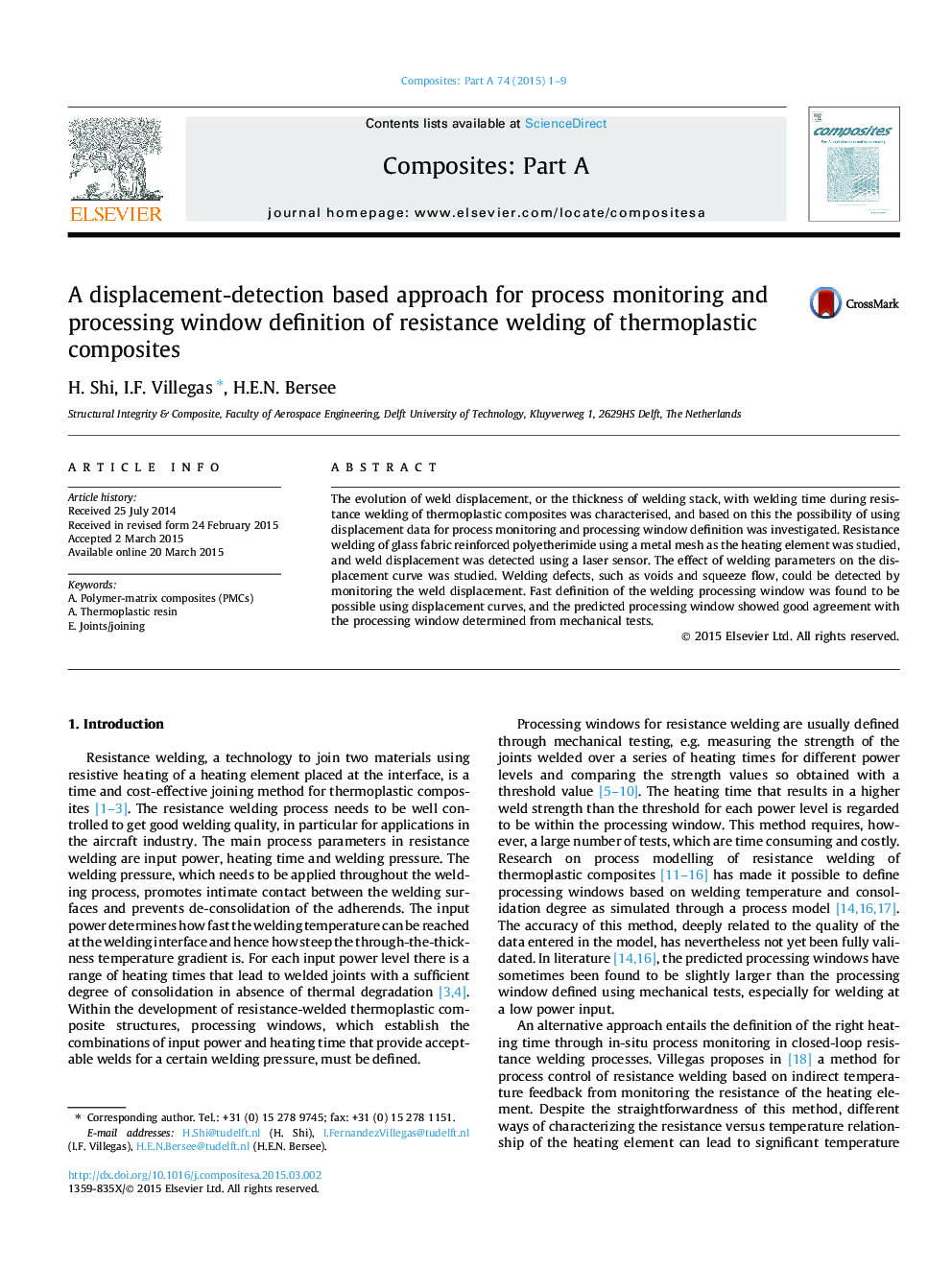| Article ID | Journal | Published Year | Pages | File Type |
|---|---|---|---|---|
| 7891730 | Composites Part A: Applied Science and Manufacturing | 2015 | 9 Pages |
Abstract
The evolution of weld displacement, or the thickness of welding stack, with welding time during resistance welding of thermoplastic composites was characterised, and based on this the possibility of using displacement data for process monitoring and processing window definition was investigated. Resistance welding of glass fabric reinforced polyetherimide using a metal mesh as the heating element was studied, and weld displacement was detected using a laser sensor. The effect of welding parameters on the displacement curve was studied. Welding defects, such as voids and squeeze flow, could be detected by monitoring the weld displacement. Fast definition of the welding processing window was found to be possible using displacement curves, and the predicted processing window showed good agreement with the processing window determined from mechanical tests.
Related Topics
Physical Sciences and Engineering
Materials Science
Ceramics and Composites
Authors
H. Shi, I.F. Villegas, H.E.N. Bersee,
